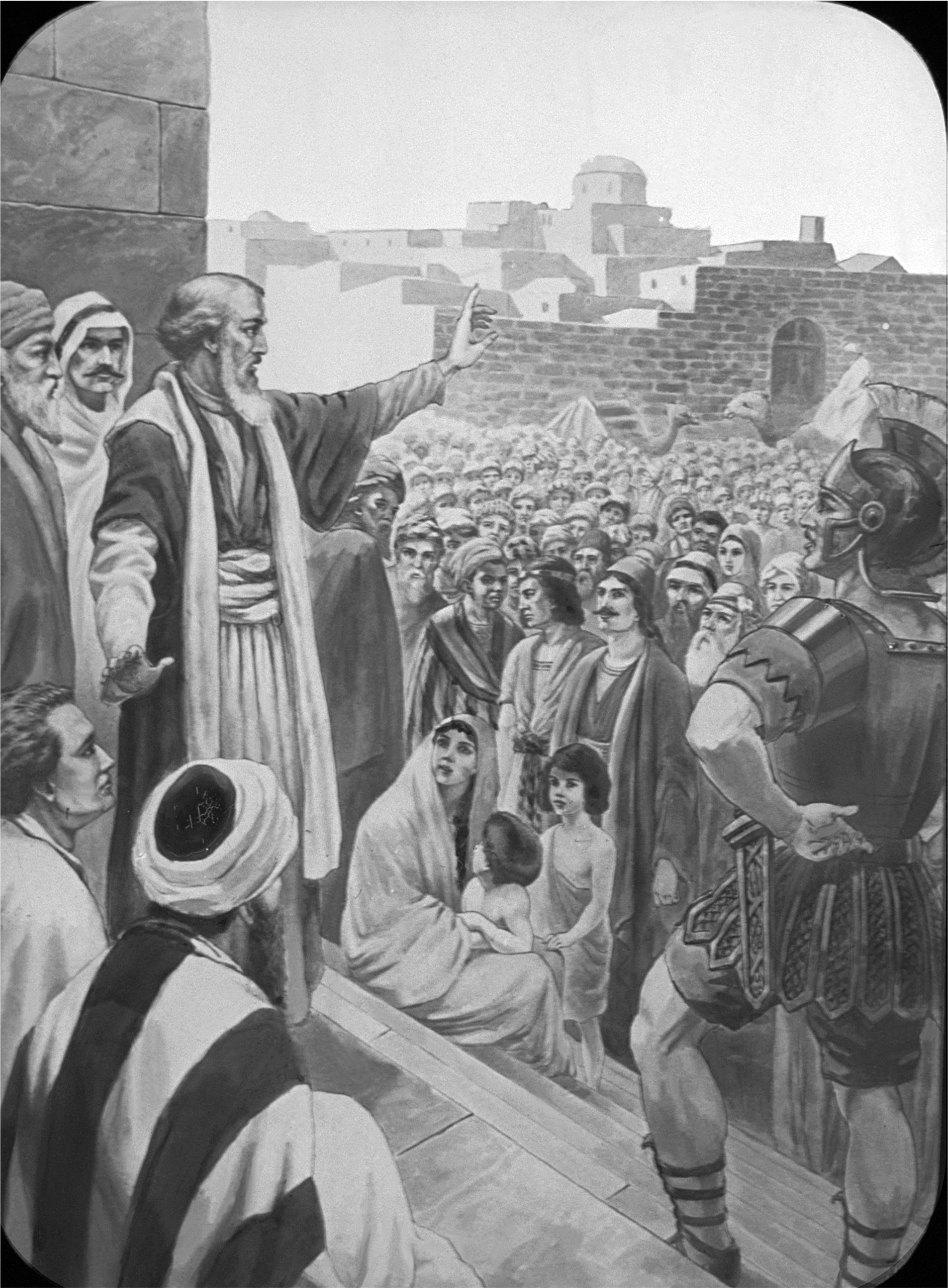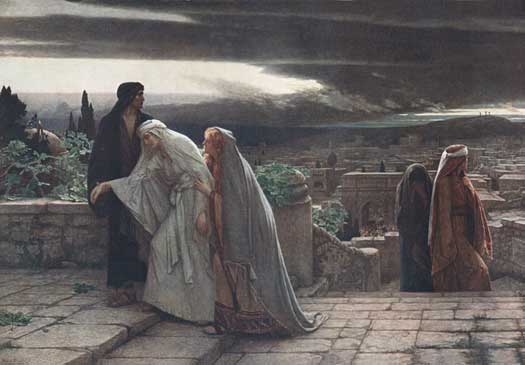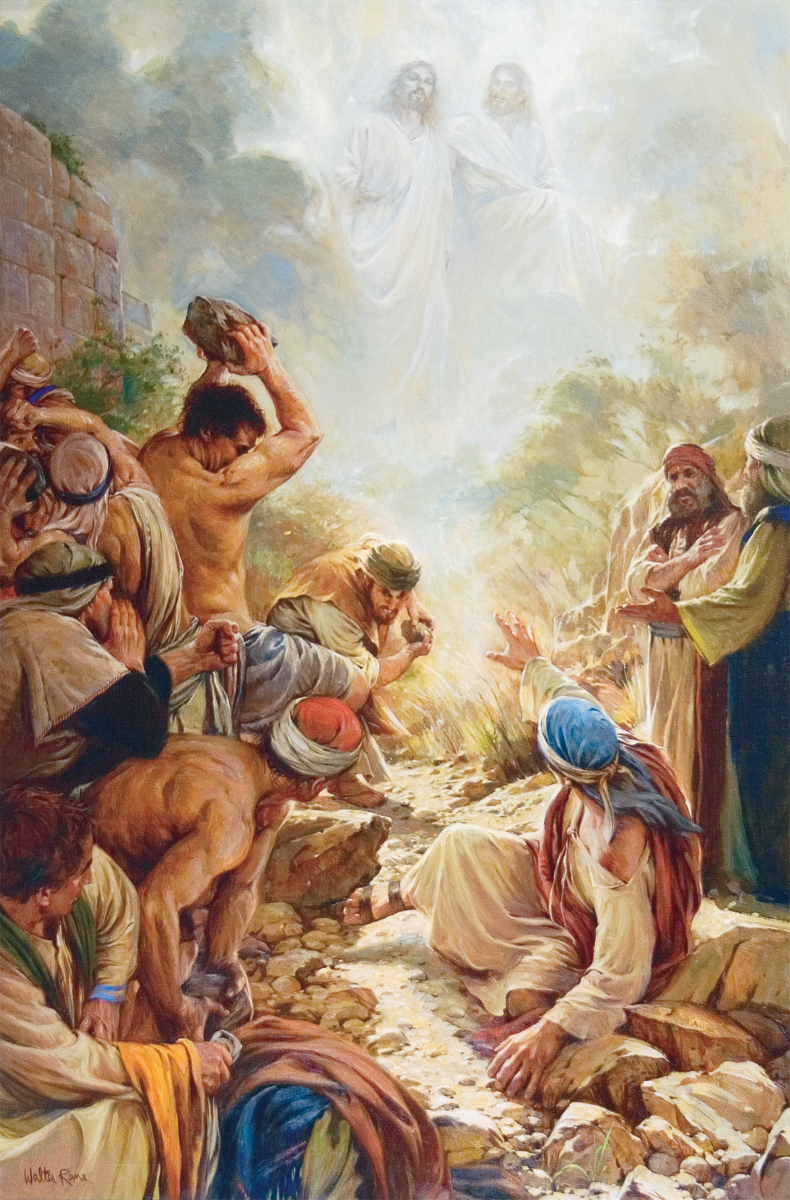MYSTERIES SURROUNDING THE RESURRECTION OF JESUS CHRIST:
Biblical clues that enable us to solve some of the enigmas surrounding the resurrection and let us know what really happened after the crucifixion.
Alfonso & Marina Baeza: abaezaparra@hotmail.com
ARTÍCULO EN ESPAÑOL: https://www.blogger.com/blogger.g?blogID=1968506293711020896#editor/target=post;postID=1619027322738401101;onPublishedMenu=allposts;onClosedMenu=allposts;postNum=1;src=postname
I. Mysteries posed by the resurrection of Jesus.- The resurrection of Jesus Christ is the FOUNDATION on which the building of Christian faith is established.(0)
However, the information we have about it and, in general, of what happened in the days following the crucifixion (from the only existing source, the New Testament), raise for us many enigmas for which we do not find convincing answers in the framework of traditional-fundamentalist biblical interpretation. This article proposes a different interpretative perspective from which it is possible to answer many of these enigmas, such as the 10 following:
Enigma 1: Nobody witnessed the resurrection: What sense does it make that the resurrection of Jesus, the crucial event of the Christian faith, would take place without witnesses? (1)
Enigma 2: After the crucifixion nobody saw Jesús again, except His own disciples.- The people of Palestine had no evidence at all that Jesus had raised from the dead, except that THAT WAS WHAT HIS DISCIPLES WERE TELLING.
Enigma 3: Public humiliation and... secret victory?: The crucifixion of Jesus was public, and interpreted by everyone as the humiliating defeat of His messianic aspirations. Why His victorious resurrection or His subsequent apparitions did not take place in public as well?
Enigma 4: The Apostles didn't proclaim the resurrection inmediately.- Why did the disciples delay the proclamation of the resurrection several weeks, until after the ascension, when nobody could already see the risen Jesus?
Enigma 5: The risen Jesús was seen by His disciples, but not in a "clear and unquestionable" way.- In the days or weeks following the crucifixón, some disciples claimed to have seen Jesus, but actually, they hadn't seen Him "clearly". Two days after the crucifixion, for example, two disciples were walking from Jerusalem to Emmaus, when Jesus joined them and talked with them along the journey, but they were
unable to recognize Him (!!??) (Lk 24: 13 - 18). Some hours later, the
Apostles were assembled in some place in Jerusalem, and Jesus came to them. But when they saw Him, they thought He was a "ghost" (Lk
24: 37). After some days, Jesus met the Eleven Apostles in
Galilee (Judas was no longer with them) but, while some of them adored Him,
others "doubted" (Mt 28: 17). What did the Apostles see, exactly, that could
explain those doubts?
Everything sounds very odd: Jesús is raised from the dead, which meant the triumph of the Plan of Salvation, but then He decides to hide this major event from the people. Only His followers will see Him resurrected. More worrying still, He manifests Himself to His disciples in such a confusing way that makes them "doubt" or, worse, that prevents them from recognizing Him. (!! ??).
Everything sounds very odd: Jesús is raised from the dead, which meant the triumph of the Plan of Salvation, but then He decides to hide this major event from the people. Only His followers will see Him resurrected. More worrying still, He manifests Himself to His disciples in such a confusing way that makes them "doubt" or, worse, that prevents them from recognizing Him. (!! ??).
Where do these strange stories come from, and what real facts could be behind them? As we will see, it is possible to interpret all these data in a way which will give sense to everything and will leave us with a more clear picture of what could really happen in the days following the crucifixion.
Enigma 6: Three evangelists don't mention the ascensión.- The ascension is mentioned only by Luke, a second generation Christian who had not known Jesus personally (Luke 1.2). How can we explain that Matthew and John, who were privileged witnesses of such solemn, spectacular and emotional farewell, should not even mention this event, which would also be the natural end of their respective Gospels?
Enigma 7: The Apostles rejected the news of the resurrection, saying it was "madness", as if they had never seen a miracle!!- Jesus had repeatedly foretold His resurrection (See Matt. 16.21; 17. 22,23; 20.19, etc.), so it is very strange that when the women came to the Apostles with the news, they refused to believe them! (Mark 16.11).
That reaction does not seem credible. The Apostles not only had heard Jesus saying, in different occasions, that He would rise from the dead, but they were "very" familiar with the miracles as well, including the resurrections! (Mk 6; Lk 7; Jn 11). After spending three years witnessing Jesus' extraordinary miracles, it is unconceivable that they considered Jesus' resurrection as "madness", as Luke states in Lk 24: 11. However, it is not only Luke: the four Gospels tell stories about the incredulity of the Apostles about Jesus' resurrection (Mtt 28: 17; Mk 16: 14; Lk 24: 11; Jn 20: 25). What was, exactly, what the Apostles were not willing to believe?
Enigma 8: The Jewish priests, who were convinced that Jesus was only a
deceiver, a false Messiah, believed "at once" the news of
the resurrection.- If the
Apostles’ reaction of disbelief to the news of the resurrection is hard to
understand, not less is the naive credulity
manifested by the members of the Sanhedrin. Remember that, for them, Jesus was
only an impostor (Matt.
27.62-67). Therefore, we would expect them to receive the news of the
resurrection with incredulity. But according to Matthew the Jewish
priests believed it without hesitation: they decided to bribe the
soldiers with a large sum of money from the Temple, asking them not to disclose the news, not
even bothering to verify what the guards had told them!!
Enigma 9: After the resurrection, we would expect Jesus to be with His disciples until the day of the ascensión, but strangely, it was not so.- Luke states that the risen Jesus was on earth for 40 days, before ascending physically into Heaven (Acts 1: 3). We would expect a physical risen Jesús to be with His disciples "full time" during that period, celebrating the victory of the Plan of Salvation, as well as teaching and preparing them for the task of spreading the Good News throughout the world. But it didn't happen that way: During those 40 days, there were only a few and brief encounters between Jesus and His disciples.
Where was He the rest of those forty days, that nobody saw Him?
Where was He the rest of those forty days, that nobody saw Him?
Enigma 10: If we compare the stories of the resurrection provided by the four evengelists, we'll find many inconsistencies and contradictions between them.- Since the resurrection is the cornerstone of the Christian faith, how can we explain that the Holy Spirit will inspire stories about this event so full of divergences and contradictions?
Providing convincing answers to questions such as the above is difficult from a biblical / fundamentalist viewpoint, but things are easier from a more open and realistic point of view, a perspective that can bring us closer to what actually happened in the days following the crucifixion.
II. Keys that allow us to solve most of the enigmas posed by the narratives of the resurrection.-
Against the traditional belief which attributed to the Gospels rather early dates of composition (the so-called “eyewitness period", 30-70 AD), most of the best current biblical scholars place them at later dates (70-100 AD).
The evangelists wrote after the First Jewish-Roman War, also known as The Great Revolt (AD 66-73), an event that is considered a major national catastrophe for the Jews. This war virtually eliminated all traces of the passage of Jesus of Nazareth on earth. The evangelists were nameless second and third generation Christians who had not personally met Jesus.(2) To carry out their task, they availed themselves of pre-existent fragmentary writings as well as oral traditions that, by then, no doubt already contained some bogus data, some of which they regarded as authentic and included in their narratives.
According to the hypothesis put forward by these authors, the contradictions and difficulties found in the resurrection accounts, arise because the Gospels contain, along with genuine information derived from authentic primitive stories, some spurious data that had been previously incorporated by tradition. That explains, for example, the divergences and contradictions we find in the narratives of the resurrection we spoke of in our "enigma 10".
If we are able to identify and discard these false data, we will be left with accurate information that will bring us closer to what really happened in the days following the crucifixion.

If we are able to identify and discard these false data, we will be left with accurate information that will bring us closer to what really happened in the days following the crucifixion.

An example of spurious tradition, collected only by Matthew, stated that a guard was placed at Jesus’ tomb, and that those soldiers saw the resurrection and reported it to the Jewish authorities. That story is false. See note (1) at the end of this article, where we present some arguments which demonstrate that nobody saw Jesus’ resurrection. According to Mark, Luke and John, nobody witnessed the resurrection.
Here we have the solution for our "enigma 8", about the surprising "gullibility" with which the Jewish leaders received the news of the Resurrection: IT NEVER HAPPENED. there was not such credulity. Actually, there was no guard, and the members of the Sanhedrin never had any evidence or "news" about Jesus' resurrection.
Similarly, other spurious passages that we must dismiss are those which present the risen Jesus as a physical being, who walks with His disciples (Lk 24:15), eats with them (Lk 24:43; Jn 21: 13), or shows them the wounds of the crucifixion (Lk 24:39).
As we will see, the resurrection of Jesús was an event of a spiritual nature, and the subsequent encounters with His disciples occurred in the form of visions, dreams and revelations. There was no bodily resurrection, and therefore there were no physical encounters between Jesus and His disciples.
The traditions (which already appear in the Gospels) that present the risen Jesus as a man in the flesh, are in fact "reworkings" of earlier reports which spoke of a spiritual resurrection.
What evidence do we have of this?
III. What first generation Christians believed about the resurrection.-
If we analyze the information provided by the different NT authors who talk about the resurrection, taking into account the chronological order in which they wrote, we’ll be able to see the evolution that the story was experiencing with the passage of time as a result of dynamic traditions: the original event (the spiritual exaltation of Jesus into Heaven after His crucifixion) ended up becoming a “bodily” resurrection, as it is insinuated in the first Gospels, Mark and Matthews, and clearly presented in the last ones, Luke and John.
The chronological order of the NT writings that speak about the resurrection, is as follows:
1) Paul (50’s)
2) Mark (around 70 AD, though the last part, 16: 9 - 20, was added by a later author)3) Matthew (80 – 90 AD)
4) Luke (85 – 90 AD)
5) John (90 – 110 AD. It has more than one author. Originally ended in 20: 31)
Paul is the earliest writer (he wrote 20 – 50 years earlier than the evangelists), so it is very important to carefully examine what he tells about the resurrection. His teachings represent what the early christians believed about it.
Well, Paul certainly speaks of the "resurrection" of Christ, but he never mentions the empty tomb, nor he says or insinuates that the resurrection had anything to do with the physical body. On the contrary, when Paul teaches about the resurrection, he states that the body which raises is different, and of a different nature, from the one that was buried (1Cor 15). A ‘physical’ body is buried, but a ‘spiritual’ body is risen (1Cor 15: 44). The same idea is stated by the author of 1 Peter: “For Christ also died […], being put to death in the flesh but made alive in the spirit” (1 Pet. 3:18, RSV). Jesus, therefore, was risen with a spiritual body, a new body that needed nothing of the old “material body” that was buried on Friday afternoon. That's why we should question the passages that speak of a risen Jesus of flesh-and-blood.
Paul does not give us any details about the nature of the risen Jesus, but he speaks of His resurrection as a model (1 Cor. 15.16-23) of the final resurrection of the righteous, and about the latter, he states:
35 But someone will ask, “How are the dead raised? With what kind of body will they come?” 36 How foolish! […] 37 When you sow, you do not plant the body that will be, [...] 44 it is sown a natural body, it is raised a spiritual body. (1 Cor 15: 35 – 44. N.I.V.)
Paul’s words leave no doubt: in the resurrection, what raises is not the same body that was buried, but a new one, spiritual in nature. This could be the reason why Paul never mentions the empty tomb!!
Note that, while Luke says that Jesus rose bodily and remained on earth for forty days before ascending into Heaven (Acts 1: 1 - 11), Paul, who wrote some thirty years earlier, knows nothing about a supposed physical stay of the risen Jesus on earth. For Paul, resurrection and ascension were the same thing. There was no physical stay of Jesus on earth after His resurrection. Jesus was, at the same time, resurrected and enthroned into Heaven, from where He manifested Himself to the Apostles in the days following the crucifixion, the same way He would manifest to Paul himself a few years later on the road to Damascus.
IT IS VERY IMPORTANT TO REALIZE THAT Paul makes no difference (1Cor 15: 3 – 8) between the apparitions of Jesus to His disciples in the days following the crucifixion and the experience he underwent on the road to Damascus: they were events of the same nature, both of them were VISIONS.
It is clear that Paul's experience on the road to Damascus didn't take place in the physical dimension: those who were with him did not see what he saw, nor heard what he heard. The experience was real for Paul, and in fact it transformed him, but the others were not affected at all (Acts 9: 1 - 8; 22: 6 - 11).
Not long before, something similar had happened to Stephen, when he was about to be stoned to death: he lifted up His eyes to Heaven...“and saw Jesus at the right hand of God” (Acts 7.55). But no matter how much those present might have looked towards where Stephen seemed to be looking at, they would have never seen what Stephen was seeing through revelation (Acts 7:55-56).
The encounters betwwen Jesús and the Apostles in the days or weeks following the crucifixión had that very same nature: they took place through visions.
In his work, On The True Doctrine: A Discourse Against the Christians, the Neo-Platonist philosopher of the second century AD, Celsus, accused Christians of basing their faith in the resurrection of Jesus on the testimonies of some who claimed to have seen Him in dreams and visions. It seems obvious that Celsus could not invent this argument, but simply quoted what the critics of Christianity had been saying since the days of the Apostles.
It is likely that the pressure of these arguments had an influence in having second-generation and later Christians to transform the resurrection into a physical event by elaborating the narratives about the "empty tomb" and the physical encounters between the Apostles and a risen Jesus of flesh-and-blood.
It is likely that the pressure of these arguments had an influence in having second-generation and later Christians to transform the resurrection into a physical event by elaborating the narratives about the "empty tomb" and the physical encounters between the Apostles and a risen Jesus of flesh-and-blood.
IV. The spiritual nature of the resurrection and the manifestation to His disciples through visions, dissipates most of the enigmas surrounding this major event
We have already provided explanations for enigmas 8 and 10.
According to the above, the resurrection of Jesus took place on the spiritual plane, and He was seen by His disciples through visions or revelations, not physically. As we are going to see, these assumptions will allow us to solve most of the enigmas that surround the stories of the resurrection:
According to the above, the resurrection of Jesus took place on the spiritual plane, and He was seen by His disciples through visions or revelations, not physically. As we are going to see, these assumptions will allow us to solve most of the enigmas that surround the stories of the resurrection:
* Enigmas 1, 2 and 3: Nobody witnessed the resurrection, and nobody, except Jesus' followers, saw Him resurrected.- The spiritual nature of the resurrection explains why nobody witnessed it: it was a spiritual event, so no human eye could see it. It also explains why nobody saw Jesus resurrected, except His own disciples: there never was a "physical risen Jesus" walking around who could be seen. He was in Heaven and, from there, He manifested spiritually to His disciples through visions or revelations.
* Enigma 5: the doubts of the disciples concerning the risen Jesus.- Jesus’ manifestations to His followers through visions can explain passages such as Mtt 28: 17; Jn 21: 12, Lk 24: 37, etc. which state that some disciples “doubted” before the risen Jesus. The four Gospels mention the doubts of the Apostles concerning the risen Jesus, so it is very likely that there really were doubts among them concerning the resurrection. However, “doubting” before the same “flesh-and-blood Jesus" they knew so well, doesn't make much sense. What's really behind those stories of doubts?
* Enigma 5: the doubts of the disciples concerning the risen Jesus.- Jesus’ manifestations to His followers through visions can explain passages such as Mtt 28: 17; Jn 21: 12, Lk 24: 37, etc. which state that some disciples “doubted” before the risen Jesus. The four Gospels mention the doubts of the Apostles concerning the risen Jesus, so it is very likely that there really were doubts among them concerning the resurrection. However, “doubting” before the same “flesh-and-blood Jesus" they knew so well, doesn't make much sense. What's really behind those stories of doubts?
Although the evangelists place the doubts of the Apostles into the new framework of a risen Jesus of flesh-and-blood, originally the doubts and conflicts among the disciples did not refer to whether accept or not accept a Jesus in the flesh that they were seeing with their own eyes, but rather to accept or not accept the revelations or visions that some of them claimed to have had. In the framework of visions, conflicts, doubts and disputes among the disciples make sense, but in the context of a physical Jesus, don't.
The visions or revelations can also explain passages like Luke 24: 13 – 32, which present some disciples talking with the risen Jesus but being unable to recognize Him. If Jesus had raised with the same body that was put in the tomb on Friday evening, same stature, same face, same tone of voice, same characteristic gestures, etc., His disciples would have recognized Him. (See picture above representing Luke's passage, and think how unlikely would have been for the disciples not to recognize His beloved Master). So this passage must be a “reworking” of primitive authentic narratives that originally spoke of the encounters between Jesus and His disciples through visions. Things could happen like this: after the crucifixion, some disciples stated that "they had seen a vision of angels, who said He was alive" (Luke 24: 23, NIV). Others assured that they had received some revelation from Jesus Himself (John 20:18). Commenting on each other’s experiences and seeing that the messages received were very similar, some of those who initially thought they had seen an angel, concluded that the celestial being they had seen was none other than Jesus Himself, whom they had failed to recognize. This datum was preserved, although, with the passage of time and the transformation of the original visions into physical encounters with a risen Jesus of flesh-and-blood, the old narratives were adapted to the new scenario.
However, by transforming the original visions into physical encounters with Jesus, some elements fit poorly in the story, and the author of “Luke” seems to be aware of it: it is very strange that the disciples couldn't recognize Jesus. That’s why the evangelist tries to explain it by resorting to a supernatural cause, that sounds unconvincing: “16… but their eyes were kept from recognizing Him." (Lk 24:16). (That is, God made a miracle to prevent the disciples from recognizing Jesus. Why? --- absurd).
* Enigma 4: why didn't the Apostles proclaim the resurrection immediately?.- The four Gospels support the idea that there was a delay in the proclamation of Jesus' resurrection. In fact, the Apostles returned to their homes in Galilee and began working in their old (former) jobs (Jn 21: 2 - 3). But, what was the reason for the delay?
As Luke says, some disciples claimed to have had visions (Lk 24: 23) of the risen Jesus. This caused a period of doubts and disputes among them. But finally the group of disciples, or some of them, saw Jesús as well, and became convinced that Jesus had been exalted into Heaven, from where He was revealing Himself to some disciples. Then they left their old jobs again and the proclamation of the Gospel began.
* Enigma 4: why didn't the Apostles proclaim the resurrection immediately?.- The four Gospels support the idea that there was a delay in the proclamation of Jesus' resurrection. In fact, the Apostles returned to their homes in Galilee and began working in their old (former) jobs (Jn 21: 2 - 3). But, what was the reason for the delay?
As Luke says, some disciples claimed to have had visions (Lk 24: 23) of the risen Jesus. This caused a period of doubts and disputes among them. But finally the group of disciples, or some of them, saw Jesús as well, and became convinced that Jesus had been exalted into Heaven, from where He was revealing Himself to some disciples. Then they left their old jobs again and the proclamation of the Gospel began.
* Enigma 6: the silence of three evangelists about the ascension.- Within the framework of the spiritual resurrection is easy to explain the mysterious silence of three of the four evangelists about the ascension: there was no physical resurrection and obviously, there was no visible ascension into heaven.
But once tradition turned the original exaltation of Jesus into a bodily resurrection, an explanation had to be given as to what happened to that physical body, and stories were created, such as the ascension, which Luke deemed authentic (Acts 1:1-11).
* Enigma 7: the disciples rejected the news of the resurrecition.- The disbelief of the Apostles to the news of the resurrection appears in the four Gospels, which suggests that it really happened that way. But the evangelists mention that disbelief in the context of a physical resurrection, in which the story turns to squeak. What could really happen?
According to the four Gospels, it was the women, Mary Magdalene and the others, who initially spread the news of the resurrection. This datum helps us understand the attitude of disbelief manifested by the apostles.
The Apostles respected the women who followed Jesus, and had no reason to doubt their word. In fact, they wouldn't have rejected the news (probably) if the women had spoken of a physical encounter with the risen Jesus. But they talked to them about visions, which awakened logical suspicions (3)
Let’s not forget that Jesus had expelled seven demons from Mary Magdalene and had also delivered the other women from “evil spirits.” (Luke 8.1-3, Mark 16.9). In biblical times demonic possessions could be manifested in very different ways: epileptic-type seizures (Luke 9.39), various mental disorders (Matt. 8.28), and even blindness (Matt. 12.22), deafness (Mark 9.25, Mark 9.25), etc. etc. In the case of Mary Magdalene and the other women, it is very likely that the visible manifestation of the possessions they had suffered were certain mental disorders. It is not strange, therefore, that, knowing their past history and listening to them now speaking about visions, the Apostles should think that the women’s former malady was relapsing, possibly as a result of the terrible experience they had undergone contemplating the Teacher’s crucifixion.
But afterwards, they themselves, or some of them, went through similar experiences, or were part of them, or witnessed them, and learned that Jesus was really alive, no longer subject to the limitations imposed by a physical body, but possessing a spiritual body, from which He could assure them of His guidance for the mission of preaching the Good News all over the world:
Jesus came to them and said, “All authority in heaven and on earth has been given to me. 19 Therefore go and make disciples of all nations, [...] And surely I am with you always, to the very end of the age.” (Matt 28: 18 – 20)
The echoes of that message, which some disciples received through visions, dreams, or revelations, persisted, and more than half a century later Matthew reflected it in his Gospel, though hinting that had been pronounced by a physical Jesus. But it is clear that only from the spiritual dimension Jesus could assure a permanent assistance to all of His disciples.
2013 - Alfonso & Marina Baeza (abaezaparra@hotmail.com)
2013 - Alfonso & Marina Baeza (abaezaparra@hotmail.com)
Final note: Since we're Spanish, it is likely that some ideas aren't expressed properly. Any suggestion will be welcomed!!
---------------oooooooooooo000000000000oooooooooooo---------------
(0) "[...] if Christ has not been raised, your faith is futile; you are still in your sins. 18 Then
those also who have fallen asleep in Christ are lost." (1Cor 15: 17-18)
(1) According to Mark, Luke and John, nobody witnessed the resurrection. Matthew is the only one that presents the story of the soldiers who guarded Jesus tomb, whose members witnessed the resurrection and reported it to the priests. But it's an apocryphal tradition. None of the authors of the New Testament seem to know that there were witnesses to the resurrection. It is very unlikely that three of the four evangelists failed to mention this important fact. Mark, Luke and John say that on Sunday morning, the women came to the Tomb, thinking that nobody would be there. No guard was guarding the tomb of Jesus. In addition, some NT texts establish clearly that the Jewish leaders never had any evidence that Jesus had risen (See Acts 5:38 and 23: 8, for instance).
those also who have fallen asleep in Christ are lost." (1Cor 15: 17-18)
(1) According to Mark, Luke and John, nobody witnessed the resurrection. Matthew is the only one that presents the story of the soldiers who guarded Jesus tomb, whose members witnessed the resurrection and reported it to the priests. But it's an apocryphal tradition. None of the authors of the New Testament seem to know that there were witnesses to the resurrection. It is very unlikely that three of the four evangelists failed to mention this important fact. Mark, Luke and John say that on Sunday morning, the women came to the Tomb, thinking that nobody would be there. No guard was guarding the tomb of Jesus. In addition, some NT texts establish clearly that the Jewish leaders never had any evidence that Jesus had risen (See Acts 5:38 and 23: 8, for instance).
(2) The disciples of Jesus were all Jews from Palestine and spoke Aramaic. The Gospels, all of them, were written in Greek. There is a remarkable consensus among current scholars that “Mark” was the first Gospel. The author of “Mark” makes notable mistakes of geography, showing clearly that he had a poor knowledge of Palestine, and therefore, that had not been a direct disciple of Jesus. The author of “Matthew” wrote his Gospel having the Gospel of Mark as a reference. Matthew reproduces many passages of Mark "word for word". It seems clear that if the author of Matthew had been a disciple of Jesus he wouldn’t have copied from someone who had not lived what he tells. Luke, on the other hand, opens his Gospel saying that he writes after doing a task of research, data collection and material organization, making it clear therefore that he had not been a direct witness of the facts he narrates. The last Gospel, John, was composed at the end of the 1st century AD, making it highly unlikely that its author had accompanied Jesus, between 60 and 70 years earlier. Although the tradition ended up attributing the fourth Gospel to the apostle St. John, the polished Greek in which “John” writes can hardly be attributed to the humble Galilean fisherman who probably could not write, and less in Greek. Besides, the author of the fourth Gospel is clearly anti-Jewish and speaks disparagingly of "the Jews" as opposed to the true believers (supposedly Jewish as well!), which does not seem logical in the mouth of a Jew (Jn 1:19; 3:25; 5:16; etc.).
(3) Note what two disciples were saying after receiving the first confusing news of the resurrection:
"[...] some of our women [...] went to the tomb early this morning [...] and told us that they had seen a vision of angels, who said he was alive." (Lk 24: 22 - 23)
(3) Note what two disciples were saying after receiving the first confusing news of the resurrection:
"[...] some of our women [...] went to the tomb early this morning [...] and told us that they had seen a vision of angels, who said he was alive." (Lk 24: 22 - 23)







































No hay comentarios:
Publicar un comentario